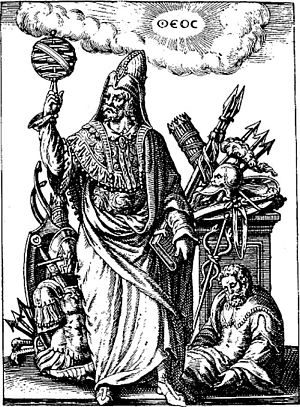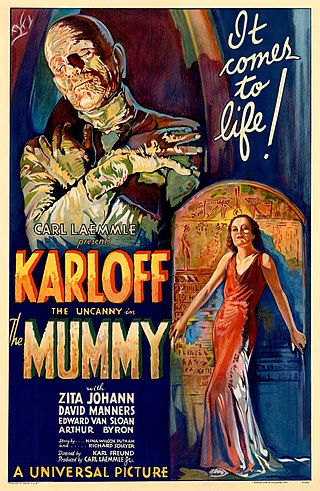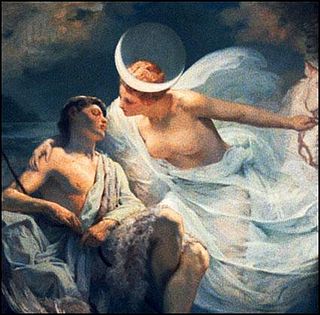See also
- All pages with titles containing Thoth
- Jex Thoth, a band
- Society of Thoth, an undergraduate secret society at the University of British Columbia
- The Ring of Thoth a story by Arthur Conan Doyle
Thoth is an ancient Egyptian deity.
Thoth may also refer to:

Imhotep was an Egyptian chancellor to the Pharaoh Djoser, possible architect of Djoser's step pyramid, and high priest of the sun god Ra at Heliopolis. Very little is known of Imhotep as a historical figure, but in the 3,000 years following his death, he was gradually glorified and deified.
In Egyptian history, the Upper and Lower Egypt period was the final stage of prehistoric Egypt and directly preceded the unification of the realm. The conception of Egypt as the Two Lands was an example of the dualism in ancient Egyptian culture and frequently appeared in texts and imagery, including in the titles of Egyptian pharaohs.

Set is a god of deserts, storms, disorder, violence, and foreigners in ancient Egyptian religion. In Ancient Greek, the god's name is given as Sēth. Set had a positive role where he accompanies Ra on his barque to repel Apep, the serpent of Chaos. Set had a vital role as a reconciled combatant. He was lord of the Red Land (desert), where he was the balance to Horus' role as lord of the Black Land.

Hermes Trismegistus is a legendary Hellenistic period figure that originated as a syncretic combination of the Greek god Hermes and the Egyptian god Thoth. He is the purported author of the Hermetica, a widely diverse series of ancient and medieval pseudepigraphica that lay the basis of various philosophical systems known as Hermeticism.

Thoth is an ancient Egyptian deity. In art, he was often depicted as a man with the head of an ibis or a baboon, animals sacred to him. His feminine counterpart was Seshat, and his wife was Ma'at. He was the god of the Moon, wisdom, knowledge, writing, hieroglyphs, science, magic, art and judgment.

Nut, also known by various other transcriptions, is the goddess of the sky, stars, cosmos, mothers, astronomy, and the universe in the ancient Egyptian religion. She was seen as a star-covered nude woman arching over the Earth, or as a cow. She was depicted wearing the water-pot sign (nw) that identifies her.

Ammit was an ancient Egyptian goddess with the forequarters of a lion, the hindquarters of a hippopotamus, and the head of a crocodile—the three largest "man-eating" animals known to ancient Egyptians. In ancient Egyptian religion, Ammit played an important role during the funerary ritual, the Judgment of the Dead.

The Mummy is a 1932 American pre-Code supernatural horror film directed by Karl Freund. The screenplay by John L. Balderston was adapted from a treatment written by Nina Wilcox Putnam and Richard Schayer. Released by Universal Studios as a part of the Universal Classic Monsters franchise, the film stars Boris Karloff, Zita Johann, David Manners, Edward Van Sloan and Arthur Byron.
Thutmose is an anglicization of the ancient Egyptian personal name dhwty-ms, usually translated as "Born of the god Thoth".
Book of Thoth is a name given to many ancient Egyptian texts supposed to have been written by Thoth, the Egyptian god of writing and knowledge. They include many texts that were claimed to exist by ancient authors and a magical book that appears in an Egyptian work of fiction.

The Eye of Horus, also known as left wedjat eye or udjat eye, specular to the Eye of Ra, is a concept and symbol in ancient Egyptian religion that represents well-being, healing, and protection. It derives from the mythical conflict between the god Horus with his rival Set, in which Set tore out or destroyed one or both of Horus's eyes and the eye was subsequently healed or returned to Horus with the assistance of another deity, such as Thoth. Horus subsequently offered the eye to his deceased father Osiris, and its revitalizing power sustained Osiris in the afterlife. The Eye of Horus was thus equated with funerary offerings, as well as with all the offerings given to deities in temple ritual. It could also represent other concepts, such as the moon, whose waxing and waning was likened to the injury and restoration of the eye.
Hermetic or related forms may refer to:
Thout, also known as Thoth and Tut, is the first month of the ancient Egyptian and Coptic calendars. It lies between 11 September and 10 October of the Gregorian calendar. The month of Thout is also the first month of the Season of Akhet (Inundation) in Ancient Egypt, when the Nile floods historically covered the land of Egypt; it has not done so since the construction of the High Dam at Aswan.

Hemiunu was an ancient Egyptian prince who is believed to have been the architect of the Great Pyramid of Giza. As vizier, succeeding his father, Nefermaat, and his uncle, Kanefer, Hemiunu was one of the most important members of the court and responsible for all the royal works. His tomb lies close to Khufu's pyramid.
Certain numbers were considered sacred, holy, or magical by the ancient Egyptians, particularly 2, 3, 4, 7, and their multiples and sums.

Kemetism "deity"), or Kemetic paganism, is a neopagan religion and revival of the ancient Egyptian religion and related expressions of religion in classical and late antiquity, emerging during the 1970s. A Kemetic or Kemetic pagan is one who follows Kemetism.
In ancient Egyptian religion, Aani or Aana is the dog-headed ape sacred to the Egyptian god Thoth. "One of the Egyptian names of the Cynocephalus Baboon, which was sacred to the god Thoth."

A lunar deity or moon deity is a deity who represents the Moon, or an aspect of it. These deities can have a variety of functions and traditions depending upon the culture, but they are often related. Lunar deities and Moon worship can be found throughout most of recorded history in various forms.
Renpetneferet is a minor goddess who is credited as being either the sister or the wife of Imhotep in Late Period Egyptian texts. There is no evidence of an individual by this name existing during the reign of King Djoser, although similar names were being used for women during the fourth dynasty.
Taht may refer to: